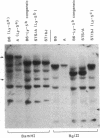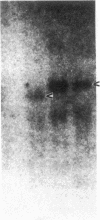Abstract
A notable feature of Ly-5, among immunogenetic systems that identify glycoproteins of the cell surface and define the surface phenotype of cells according to their lineage, is that the Ly-5 locus specifies a range of molecular isoforms that distinguish cells of different stages and branches of hematopoietic development. The composition of the Ly-5 locus is of much interest in regard to how these isoforms are constructed and differentially regulated according to cell lineage. We describe here a cDNA clone, pLy-5-68, that identifies Ly-5. The Ly-5 specificity of the pLy-5-68 clone was first indicated by a restriction fragment length polymorphism (RFLP), which in Southern blotting distinguishes genomic DNA of C57BL/6 (B6) mice (Ly-5a) from that of B6-Ly-5b congeneic mice whose genome is the same as B6 except for the segment of chromosome 1 that bears Ly-5b. For the following reasons it is unlikely that pLy-5-68 represents a gene linked to Ly-5 that was carried over with Ly-5b during serial backcrossing to make the B6-Ly-5b congeneic strain. In all mouse strains tested, the serological Ly-5 allotype (Ly-5.1 vs. Ly-5.2) accorded with the RFLP pattern. Cells of the ST/bJ mouse strain have unique Ly-5 serological reactions and ST/bJ DNA gives a unique (third) RFLP pattern (Ly-5c) with pLy-5-68. All Ly-5+ cell types reacted positively with pLy-5-68 in RNA transfer blotting, and all Ly-5- cell types tested did not. The difference in size of mRNA reactive with pLy-5-68 in cells expressing the 200-kDa Ly-5 isoform as compared with cells expressing the 220-kDa Ly-5 isoform corresponded with the difference in size of the protein components of those isoforms.
Full text
PDF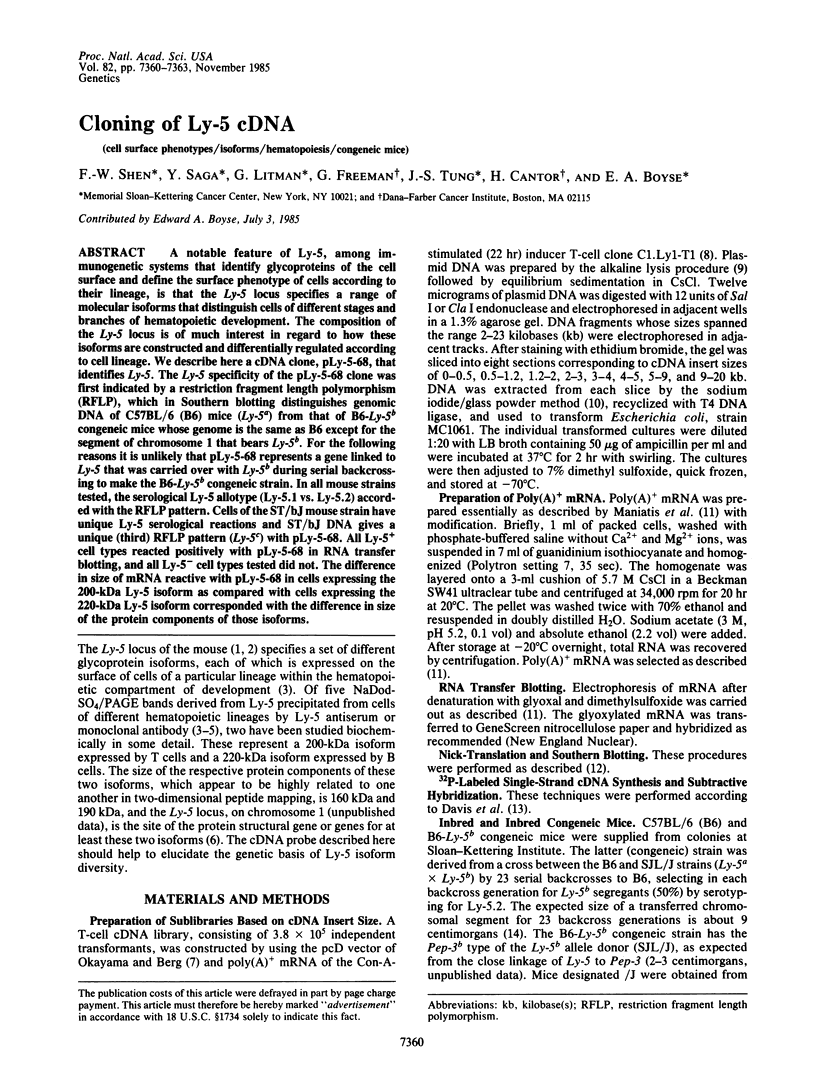
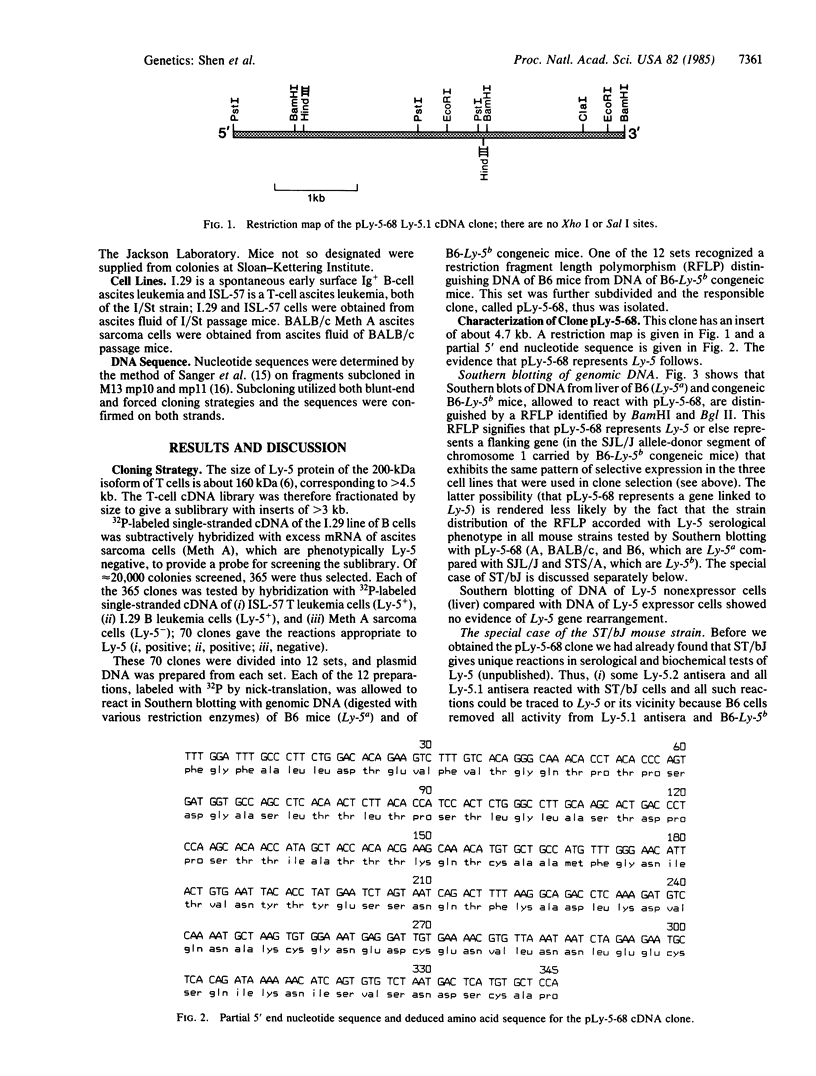
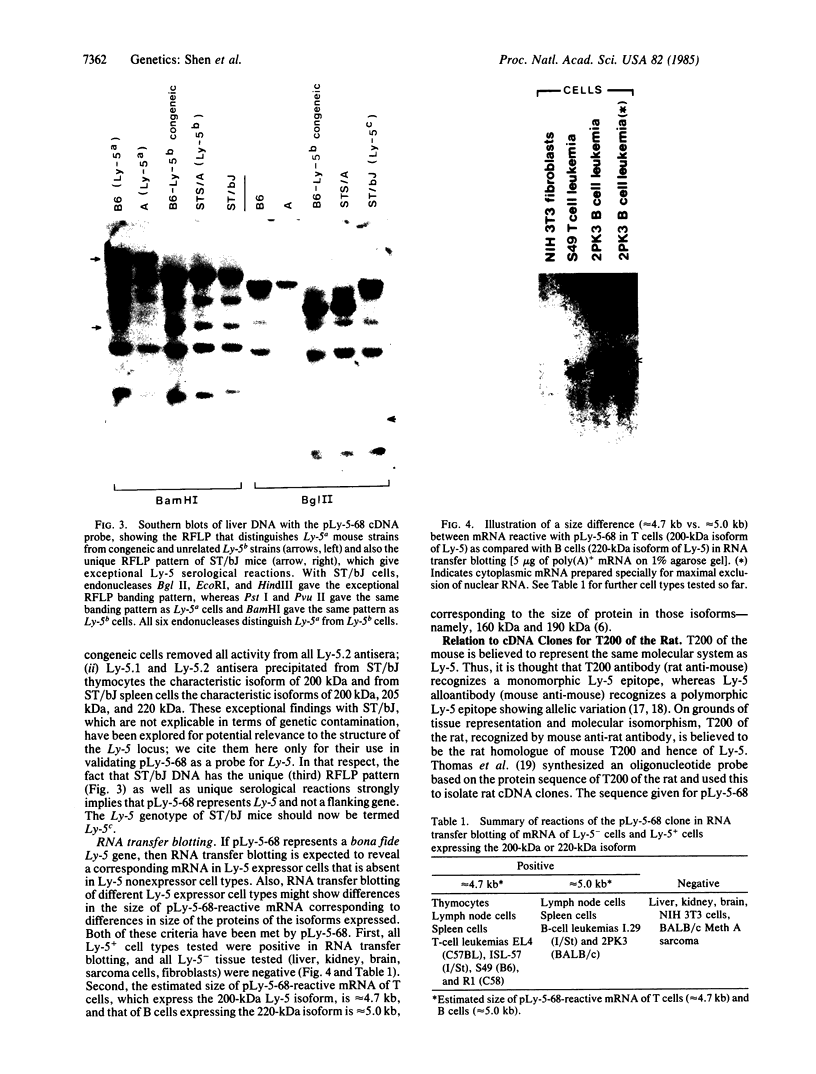
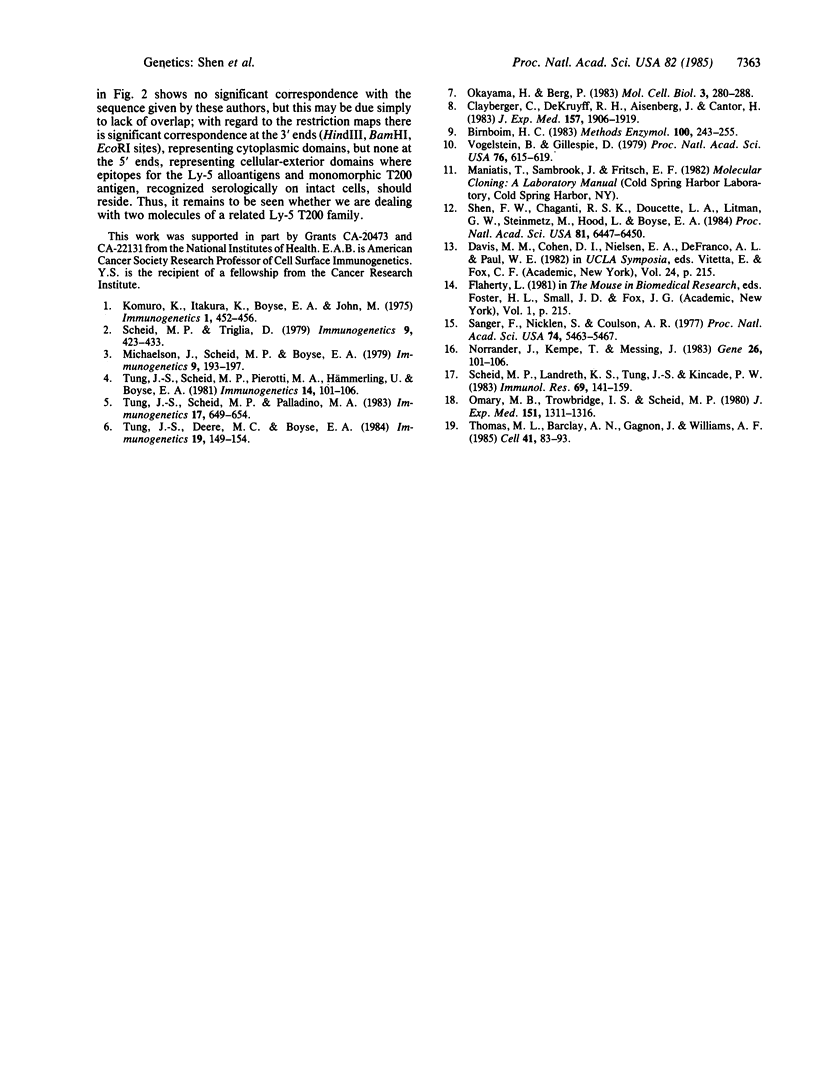
Images in this article
Selected References
These references are in PubMed. This may not be the complete list of references from this article.
- Birnboim H. C. A rapid alkaline extraction method for the isolation of plasmid DNA. Methods Enzymol. 1983;100:243–255. doi: 10.1016/0076-6879(83)00059-2. [DOI] [PubMed] [Google Scholar]
- Clayberger C., Dekruyff R. H., Aisenberg J., Cantor H. Hapten-reactive inducer T cells. I. Definition of two classes of hapten-specific inducer cells. J Exp Med. 1983 Jun 1;157(6):1906–1919. doi: 10.1084/jem.157.6.1906. [DOI] [PMC free article] [PubMed] [Google Scholar]
- Norrander J., Kempe T., Messing J. Construction of improved M13 vectors using oligodeoxynucleotide-directed mutagenesis. Gene. 1983 Dec;26(1):101–106. doi: 10.1016/0378-1119(83)90040-9. [DOI] [PubMed] [Google Scholar]
- Okayama H., Berg P. A cDNA cloning vector that permits expression of cDNA inserts in mammalian cells. Mol Cell Biol. 1983 Feb;3(2):280–289. doi: 10.1128/mcb.3.2.280. [DOI] [PMC free article] [PubMed] [Google Scholar]
- Omary M. B., Trowbridge I. S., Scheid M. P. T200 cell surface glycoprotein of the mouse. Polymorphism defined by the Ly-5 system of alloantigens. J Exp Med. 1980 May 1;151(5):1311–1316. doi: 10.1084/jem.151.5.1311. [DOI] [PMC free article] [PubMed] [Google Scholar]
- Sanger F., Nicklen S., Coulson A. R. DNA sequencing with chain-terminating inhibitors. Proc Natl Acad Sci U S A. 1977 Dec;74(12):5463–5467. doi: 10.1073/pnas.74.12.5463. [DOI] [PMC free article] [PubMed] [Google Scholar]
- Scheid M. P., Landreth K. S., Tung J. S., Kincade P. W. Preferential but nonexclusive expression of macromolecular antigens on B-lineage cells. Immunol Rev. 1982;69:141–159. doi: 10.1111/j.1600-065x.1983.tb00453.x. [DOI] [PubMed] [Google Scholar]
- Shen F. W., Chaganti R. S., Doucette L. A., Litman G. W., Steinmetz M., Hood L., Boyse E. A. Genomic constitution of an H-2:Tla variant leukemia. Proc Natl Acad Sci U S A. 1984 Oct;81(20):6447–6450. doi: 10.1073/pnas.81.20.6447. [DOI] [PMC free article] [PubMed] [Google Scholar]
- Thomas M. L., Barclay A. N., Gagnon J., Williams A. F. Evidence from cDNA clones that the rat leukocyte-common antigen (T200) spans the lipid bilayer and contains a cytoplasmic domain of 80,000 Mr. Cell. 1985 May;41(1):83–93. doi: 10.1016/0092-8674(85)90063-7. [DOI] [PubMed] [Google Scholar]
- Tung J. S., Deere M. C., Boyse E. A. Evidence that Ly-5 product of T and B cells differ in protein structure. Immunogenetics. 1984;19(2):149–154. doi: 10.1007/BF00387858. [DOI] [PubMed] [Google Scholar]
- Tung J. S., Scheid M. P., Palladino M. A. Different forms of Ly-5 within the T-cell lineage. Immunogenetics. 1983;17(6):649–654. doi: 10.1007/BF00366132. [DOI] [PubMed] [Google Scholar]
- Tung J. S., Scheid M. P., Pierotti M. A., Hämmerling U., Boyse E. A. Structural features and selective expression of three Ly-5+ cell-surface molecules. Immunogenetics. 1981;14(1-2):101–106. doi: 10.1007/BF00344303. [DOI] [PubMed] [Google Scholar]
- Vogelstein B., Gillespie D. Preparative and analytical purification of DNA from agarose. Proc Natl Acad Sci U S A. 1979 Feb;76(2):615–619. doi: 10.1073/pnas.76.2.615. [DOI] [PMC free article] [PubMed] [Google Scholar]



